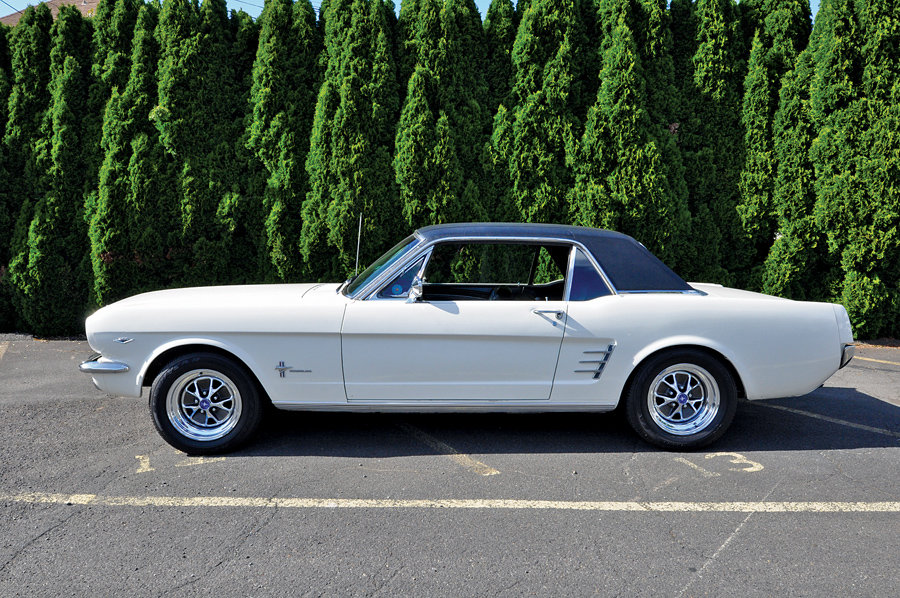
The pages of ACC are filled with all-original and fully restored cars that have sold at auction. You’ll find a bunch of them in our Market Reports, starting on p. 68. Some are cars that have passed only a few miles under their factory-fresh tires, while others are completely rebuilt, down to the last nut and bolt — and fresh install of Coker bias-ply rubber.
Both types of cars are special in their own way, and both have a pretty well-defined role in the collector-car world. For cars like these, it’s about preservation and glorification of what a car is — and there are clear values associated with all of that at sale time, along with nervousness over causing damage to original or high-dollar finishes and interiors.
Then there are the cruisers, the late-night drag racers — and even the 100,000-mile dented and damaged goods with scars to show and stories to tell. The visceral experience of the sights, smells and sounds of driver-level cars ignite the car person in each of us. Factory-fresh Marina Blue panels, worn-out repaints and rust can be badges of honor as well. But these cars aren’t usually original or much to look at.
For the past few months, I’ve been living between these two worlds with the ACC Mustang and have been wrestling with which direction to take it.
Restore or preserve
ACC’s Mustang, which I introduced in the previous issue, is a great example of something Keith Martin calls a “tweener.” It’s not original and it’s not restored, but it’s also better than most drivers. It’s a car that will never be completely original again, but it’s still original enough in places to warrant respect for its factory fittings and finishes — or at least what’s left of them. It falls between the “restore it” and “keep it stock and original” camps.
Take, for example, the engine compartment we featured in last issue’s “Wrenching” column. It has never been painted and has worn more or less evenly over the years. A heavier-duty modern aluminum radiator replaced the original a long time ago. The original 2-bbl intake and carburetor are gone, too, as is the factory a/c compressor and the original exhaust manifolds. It was upgraded with some select performance parts before originality became the hot ticket for cars like it.
Our Mustang is more usable and fun the way it is now, but it’s not original.
Maybe it doesn’t matter. After all, this isn’t a K-code Mustang like the one we profile in this issue on p. 56. This is a low-horse car with an automatic transmission — one of tens of thousands built in 1966. Why not just tear into it, replace and upgrade a bunch of exterior and interior components, and paint everything? What’s to lose?
An old car’s new job
Semi-original cars make great drivers because they can be used often without fear and upgraded thoughtfully — but they still have that essence of a factory unit. I found the answer to my question about direction with the Mustang when I realized that, and that using a semi-original car can make it real to a next-generation car enthusiast.
I wrote a column in an early issue of ACC about my daughter Katie. At the time, she was only a few months old, and I was wrestling with the idea of transporting her in my restored 1972 Chevrolet K-10 — a truck with a sloshing fuel tank mounted inches from her car seat.
Time marches on. Now she’s 6 years old. She’s a full-blown car kid, and she has strong thoughts about what she wants to ride in. Last month, her focus was that ’66 Mustang.
The car was in my shop for our “Wrenching” shoot. Once it was ready for a run back to the ACC garage, Katie hovered around it, impatiently waiting for her chance to climb in and go. So, on a Saturday morning, I ratcheted her car seat down to the original rear seat, sticking my knee in it to compress the foam and to get the belt super tight under it. She then tromped up on the door sill and plopped down in her seat, ready for her first experience in an early Mustang.
The car cruises like a 50,000-mile original — it has that complete-package feel that you don’t easily get with a total restoration. It looks really good out on the road, and it feels just right from the wheel and from the passenger’s seat — the way an old Mustang should. From the back, Katie observed and shared.
“Dad, this car sounds really nice. It’s smooth. Are these the window cranks? I can see the hood! Why isn’t the screen changing?”
That last one took my by surprise. Then I realized that every other old car she’s been in, including my ’66 Caprice, has had a modern “upgraded” stereo installed. She’d seen AM dials at car shows, but never in use — and she’d never heard an original AM single-speaker radio, either.
So I turned the knob and the original Ford speaker crackled to life. Thomas, the car’s previous owner, had it tuned to the only AM oldies station in town.
As we rolled to a stop, the white repaint on the hood of the Mustang glinted in the sun. Just then, a guy in a silver Subaru pulled up next to us. “Nice ’66 Mustang,” he yelled.
“Thanks!” yelled Katie, before I could reply.